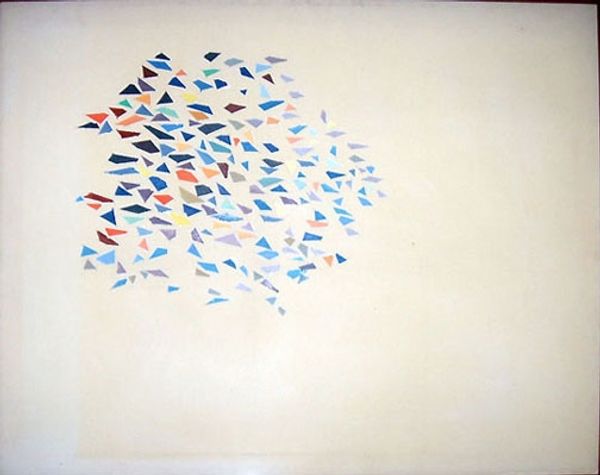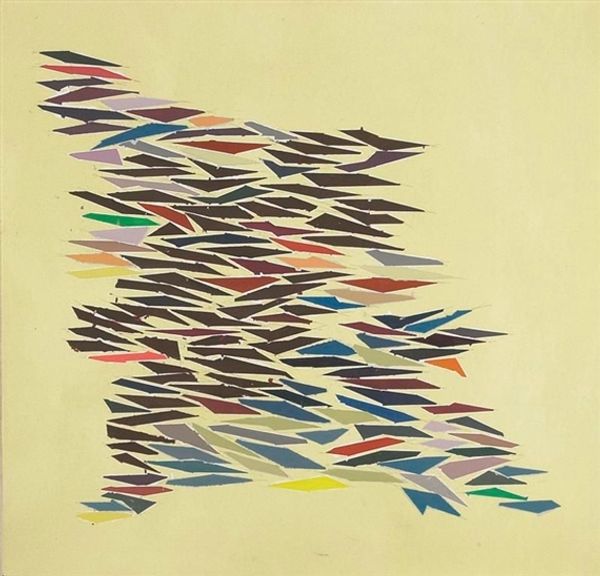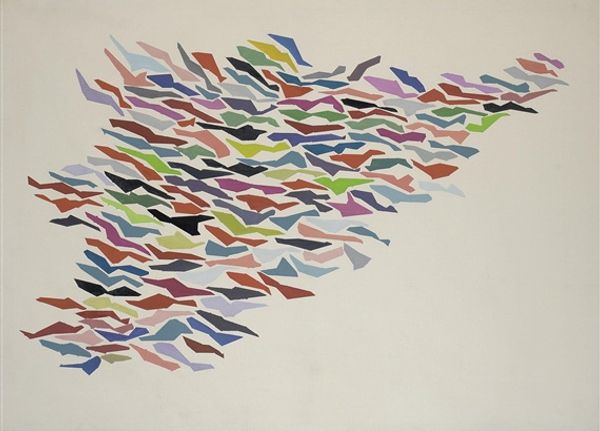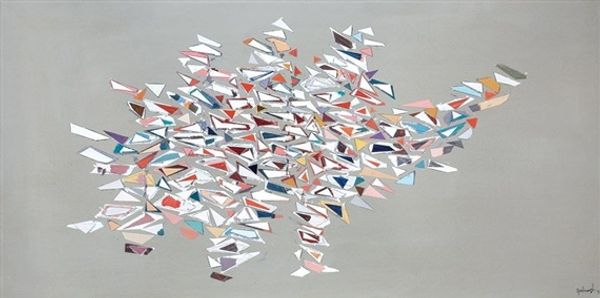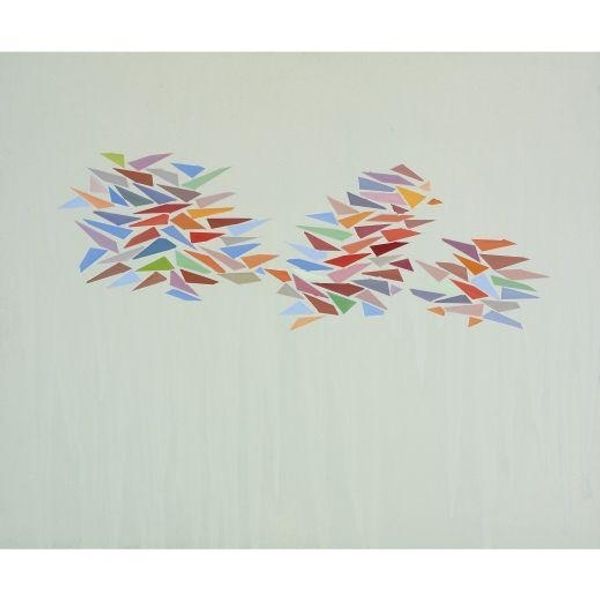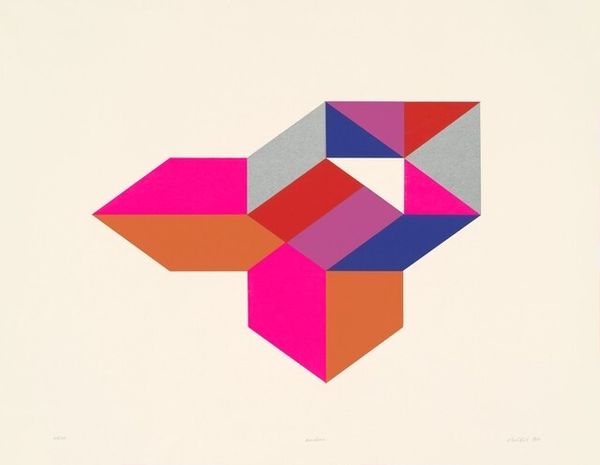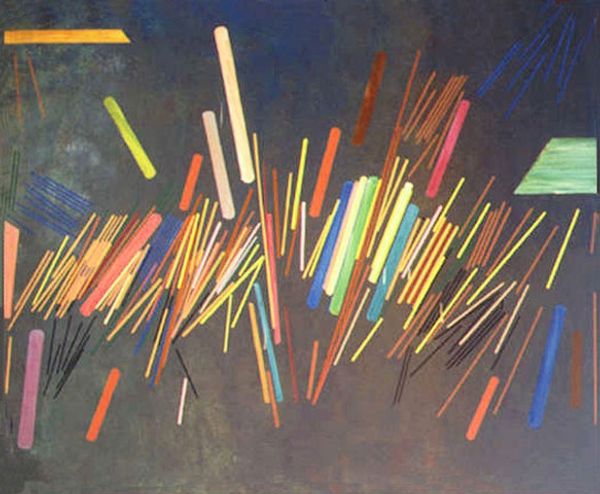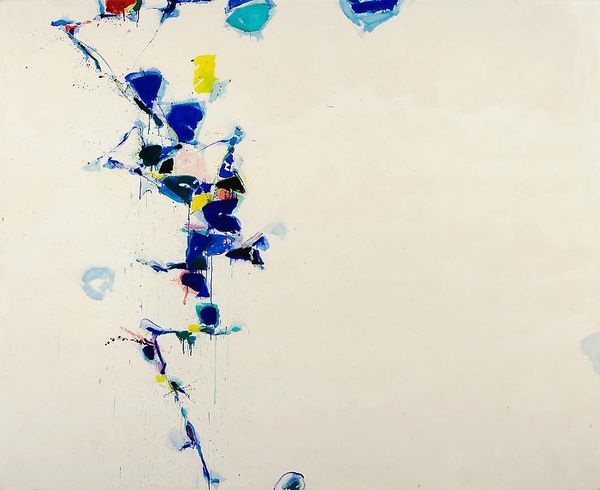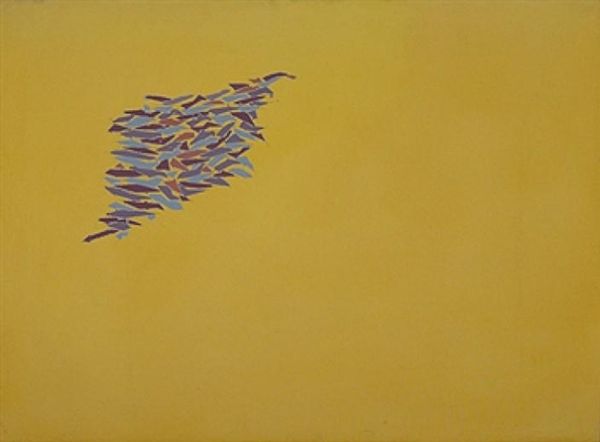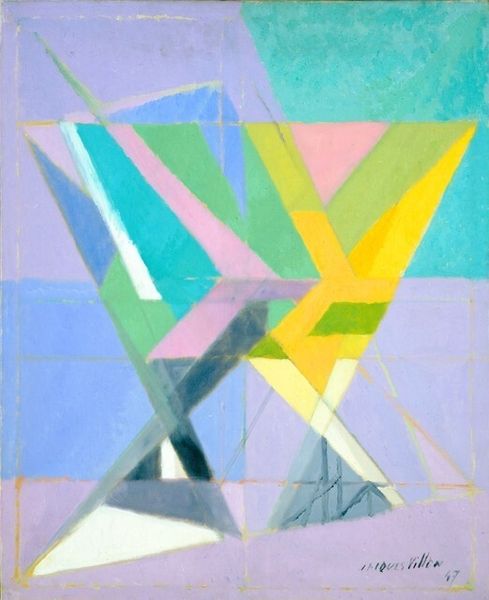
painting, acrylic-paint
#
abstract-expressionism
#
painting
#
pop art
#
pastel colours
#
colour-field-painting
#
acrylic-paint
#
form
#
geometric-abstraction
#
abstraction
#
pop-art
#
line
Copyright: Robert Goodnough,Fair Use
Curator: We’re now in front of Robert Goodnough’s painting "Texas Arch I." It’s an acrylic piece characterized by geometric forms arranged in an arching composition against a solid background. Editor: My first thought: the sheer joy of those pastel colors! They float on the canvas. The interplay between the sharp-edged forms and the soft palette is really compelling. Curator: Goodnough, often linked to Abstract Expressionism and Color Field painting, came up during a period defined by staunch formal experimentation and a postwar societal reckoning. This painting feels like a bridge between those movements. Editor: Yes, the composition itself is fascinating. We have a clear foreground that is largely empty, forcing the viewer to focus solely on this accumulation of colorful, tessellated fragments. The formal structure emphasizes line and shape above all else. The Gestalt is immediately graspable, but what of the microstructures at play here? Curator: I appreciate your point. It is, indeed, impossible to ignore Goodnough's negotiation between form and freedom. When approaching "Texas Arch I," one should reflect on the historical context of geometric abstraction: how artists, particularly women artists sidelined by the mainstream, explored similar vocabularies as acts of resistance against dominant modes of representation. Editor: It makes one ponder the concept of architectural form itself. An arch suggests support and enclosure, yet these fractured shapes deny that sense of structural integrity. Is it an arch collapsing, or perhaps one being constructed from disparate parts? Curator: Perhaps, "Texas Arch I" challenges notions of Texan identity itself, dissecting its established forms. Editor: Well, from a strictly formal standpoint, I see an exploration of how color and form can destabilize a seemingly stable structure. The use of color and fragmented shape results in something less imposing than, say, the Gateway Arch in St. Louis. Curator: It pushes me to rethink traditional readings of geometric abstraction—how social context and material practice are always already entangled, prompting us to reevaluate what might have seemed, on first impression, to be strictly a game of color and form. Editor: A game perhaps—but also a tightly structured interplay of color and shape! A compelling one.
Comments
No comments
Be the first to comment and join the conversation on the ultimate creative platform.
